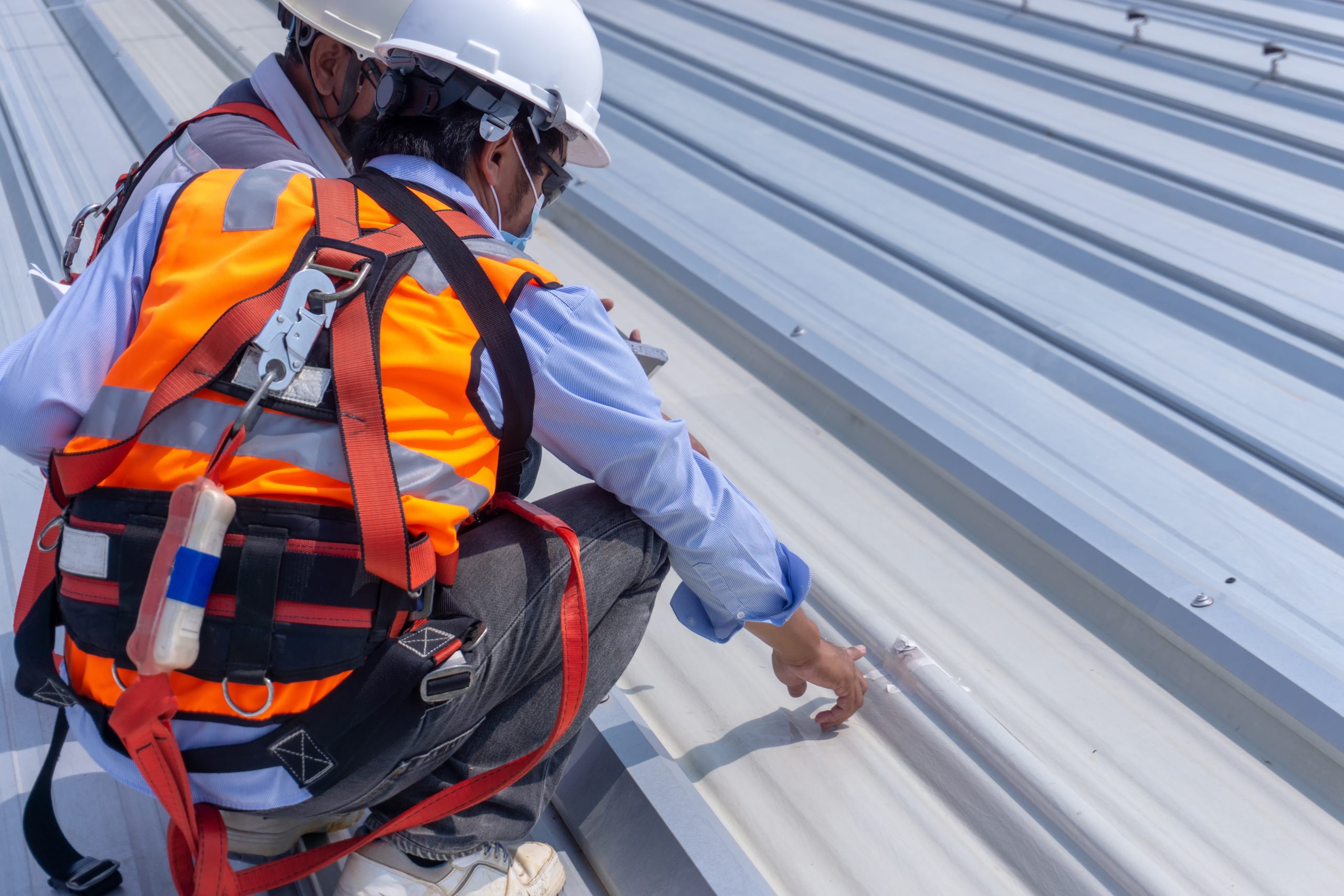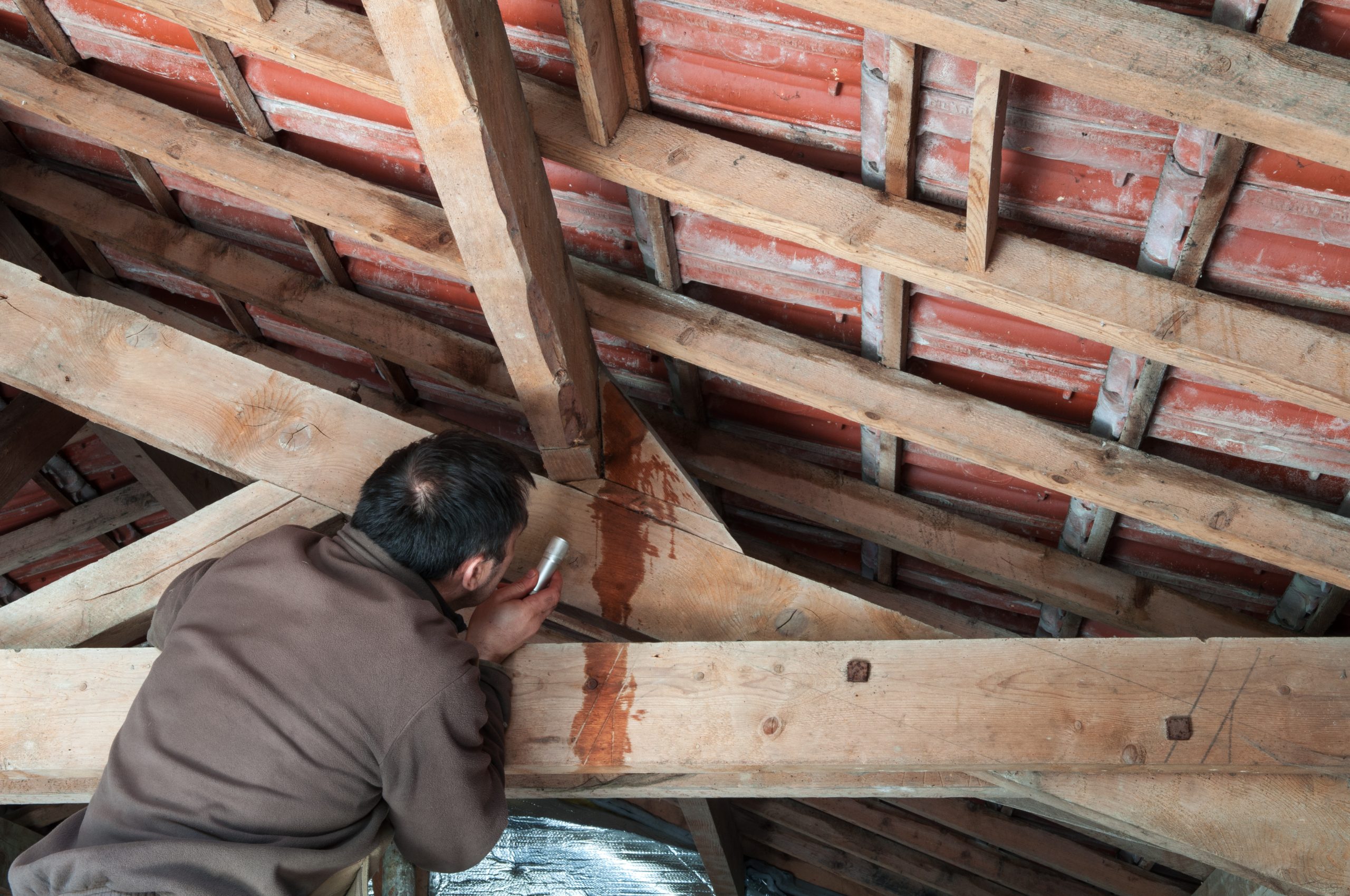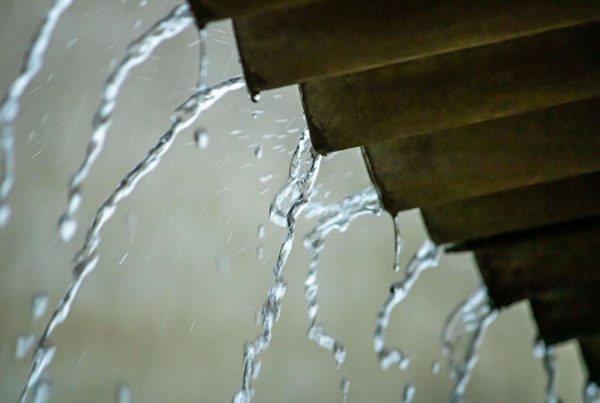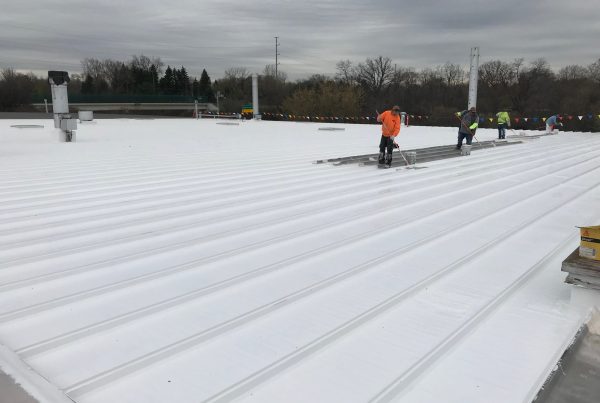
Your Commercial Roof Is Leaking. Now What?
Drip, drip, drip. As a building owner or property manager, that is not a sound you ever want to hear. But when drip, drip, drip happens, ignoring it has consequences that accelerate over time. And just in case you’re thinking about ignoring the problem, consider this: 70% of commercial property damage comes from water intrusion. In other words, commercial roof leaks matter, a lot.
How Leaks Happen
Sometimes leaks are obvious, like when a tornado, hurricane, blizzard, or other devasting event punches an actual hole through the roof into your structure. Weather is a top cause of commercial roof leaks, and when catastrophic damage happens, it must be addressed immediately.
But there are plenty of less turbulent forces that cause leakage as they constantly impact your roof.
Bad Drainage
Bad drainage means that rather than channeling water off the roof’s surface, scuppers, gutters, and downspouts are blocked, clogged, and not working properly. As a result, water is pooling and staying on the roof rather than draining away from the building. Eventually such pooling deteriorates the roof’s structure as water seeps through cracks, crevices, and weak spots to find a path to lower ground. Ponding water also puts weight on your roof. A mere one-inch-deep pool of water weighs more than 5 pounds per square foot of surface area; multiply that over a 25-foot-wide puddle to understand how quickly the stress on your building adds up. Ice dams cause similar problems, as do snow melt and refreeze.
Material Damage
Material damage to the membrane that covers your roof, the base substrate under the membrane, and/or the flashings that seal the perimeter are common causes of leaks. Over time, the membrane can crack, split, or shrink, compromising its integrity. Heavy foot traffic, debris, UV rays, and pollution are often at fault. Breaks in the membrane expose the substrate, allowing damage to spread. Flashings are thin strips of metal or similar material that protect the membrane’s edges and seal the joints between different parts of the roof. Over time, flashings expand and contract with temperature changes and are loosened by storms, inhibiting their capacity to prevent water seepage into the building’s interior.
Deteriorating Seals
Deteriorating seals around penetrations for HVAC units, conduits, drains, hot stacks, skylights, vents, and other protrusions let water penetrate the membrane and spread inside the building. Each hole must be sealed properly and tightly around the penetration, with closures monitored and maintained over time.
Aging
Aging is a fact of roofing life. Commercial flat roofs typically last 15 to 20 years; after that, even with proper maintenance, they deteriorate beyond repair and need to be replaced.
Improper Installation
Improper installation or system mismatch can compromise a roof from the outset. Commercial roofs are complex structures that require installation by qualified, knowledgeable contractors to function properly. Different types of systems are available, with SPF (spray polyurethane foam), BUR (built-up roofing), and single-ply membranes (EPDM, TPO, and PVC) most common for commercial purposes. But which type of roof is appropriate for what application is a complicated decision that impacts every aspect of your facility.

Why Leaks Matter
Anytime water is visible within your building, your roof is leaking somewhere. Understanding that is important for a number of reasons, starting with customer and employee health and safety concerns. Water is a hazard but often difficult to see, especially in small puddles on the floor. A wrong step can cause a slip-and-fall incident, with potential injury and lawsuits as a result. Growth of mold and mildew in damp spaces is another risk, especially for those with respiratory illnesses or immunity concerns. Water stains on walls and ceilings are not only unpleasant to look at; if severely damaged, building materials like drywall and ceiling tiles can actually rot and fall.
The same is true for the wood framing, joists, trusses, and rafters that make up the framework of your building. Wood absorbs moisture, causing it to expand and contract, affecting structural integrity to the eventual point of collapse. Electrical wiring is equally vulnerable. Over time, water exposure causes moisture-proof coatings to become brittle and crack, exposing the wiring beneath. Outlets, fixtures, panels, and switchboxes can short out, spark, and trigger a fire, which is a disaster no one wants.
Higher energy bills are yet another indicator that your roof is no longer fully intact. Water-saturated insulation caused by leakage can lead to a 40% loss in R-value; before long, this expense shows up in inflated costs as you try to keep your building property heated and cooled.

What To Do
Sooner or later, most commercial roofs leak. Handling the issue quickly and efficiently is key to containing damage and keeping repair costs under control. Several steps make up your action plan.
Don’t panic but take the leak seriously
Commercial roof leaks inevitably get worse, so dealing with them as soon as possible means the roof should be repairable. But be prepared and have emergency funds available so you can act fast.
Clear the affected area of people, supplies, and equipment
That confines damage to the smallest possible space and protects valuable resources. Collect water in a bucket and mop frequently to keep the floor dry. If you have large, heavy objects that can’t be moved, cover them with plastic to prevent damage.
Pinpoint and mark the source of the leak
Try to do this while it’s still raining or snowing so you know where water is coming in. Once the area dries, finding the intrusion is tough. When conditions are safe, get onto the roof to check for ponding; also make sure drains, downspouts, and gutters are clear and working properly. While you’re at it, look for other problems, just in case.
Contact your roofing contractor partner
Contact your roofing contractor partner to assess the damage and determine the repair. Then get the roof fixed promptly and professionally before damage spreads.
Talk to your insurance agent
Talk to your insurance agent and review your warranty. Depending on the cause of the leak, coverage may be available to offset repair costs.
Weather is a top cause of commercial roof leaks, and when catastrophic damage happens, it must be addressed immediately. To stay ahead of water problems, you want to set up a twice-yearly inspection and maintenance program with your roofing partner. Working with your contractor to maintain the integrity of your roofing system is the best possible strategy for protecting your facility and the people and property inside.



